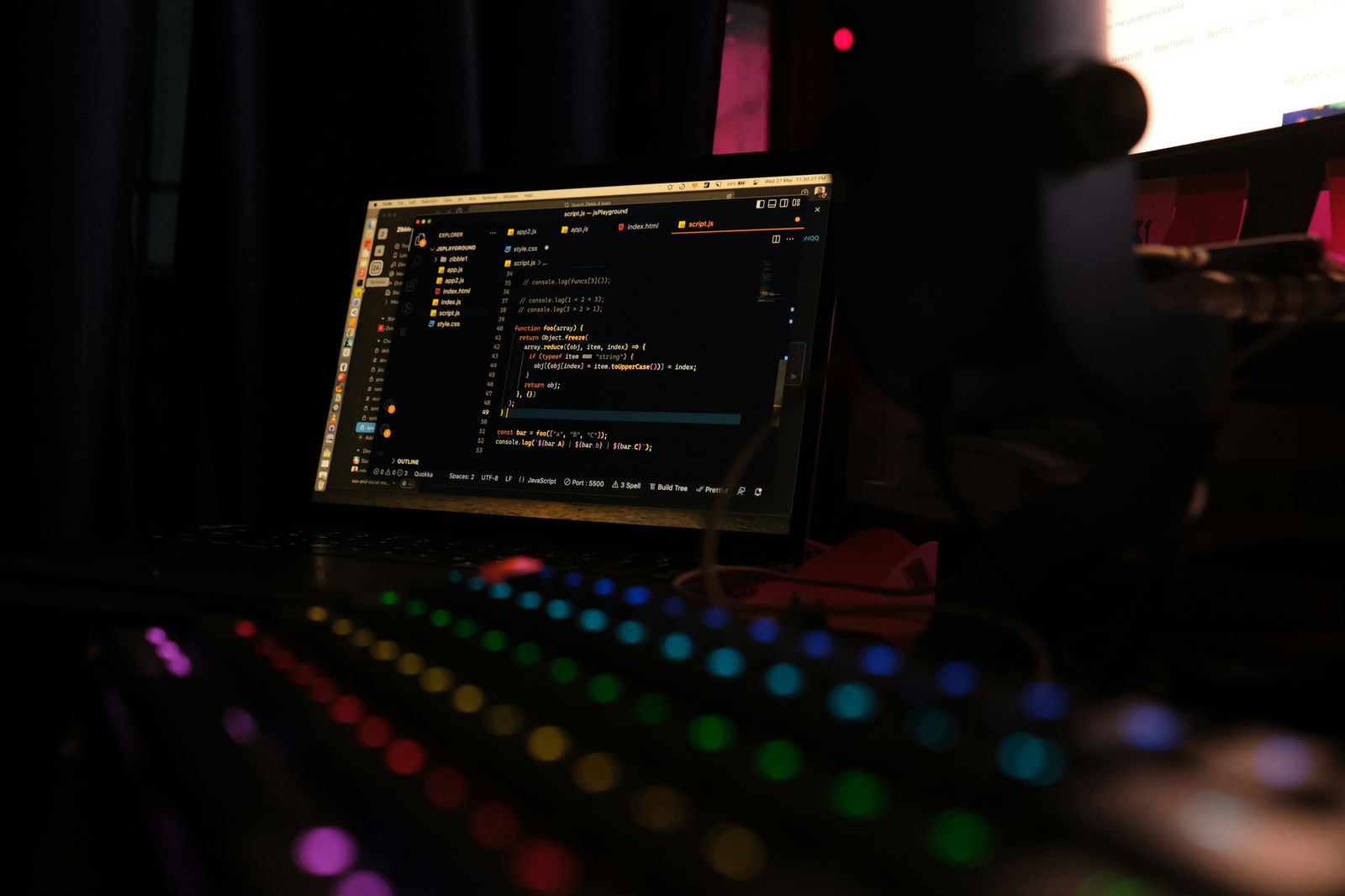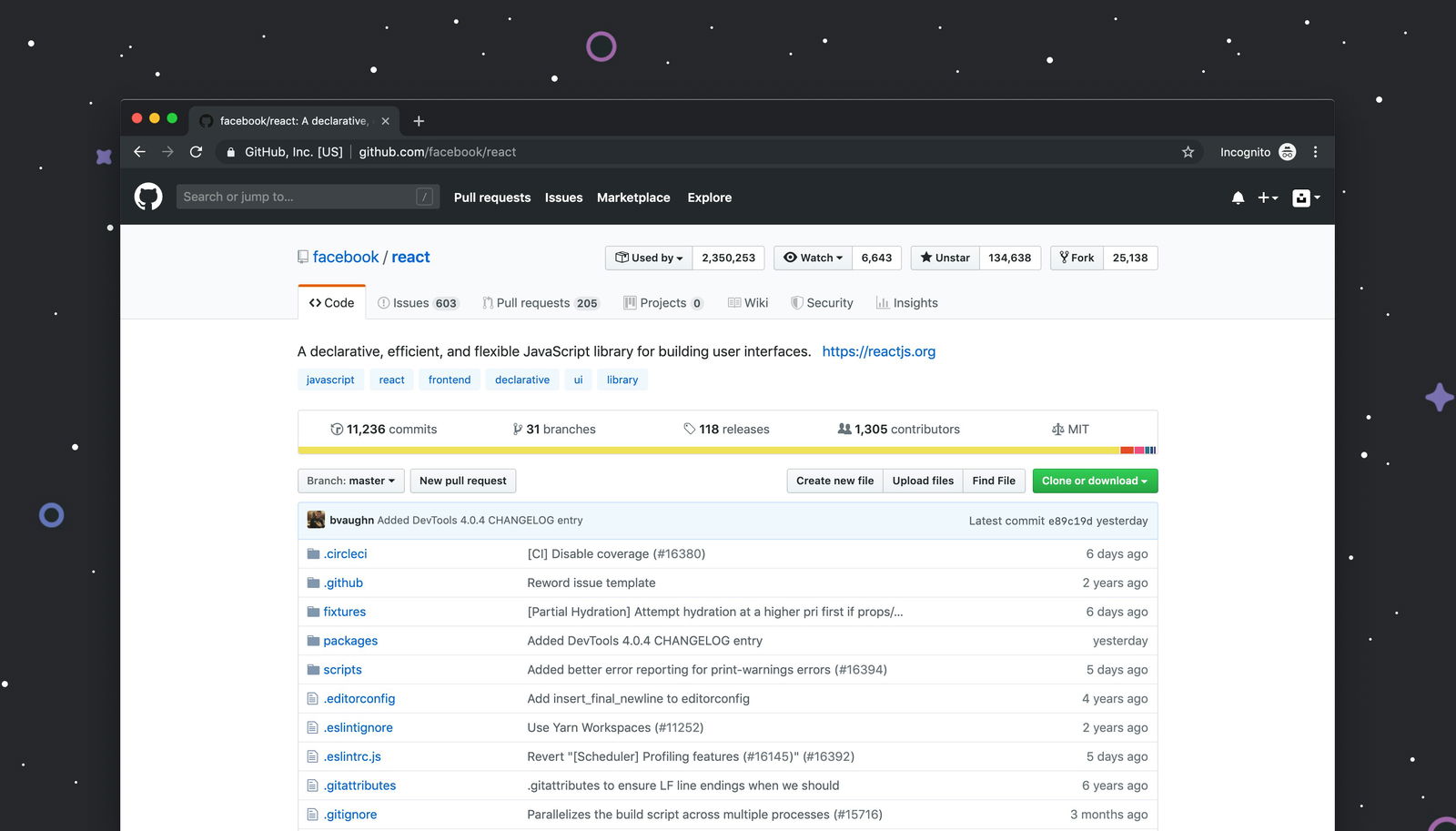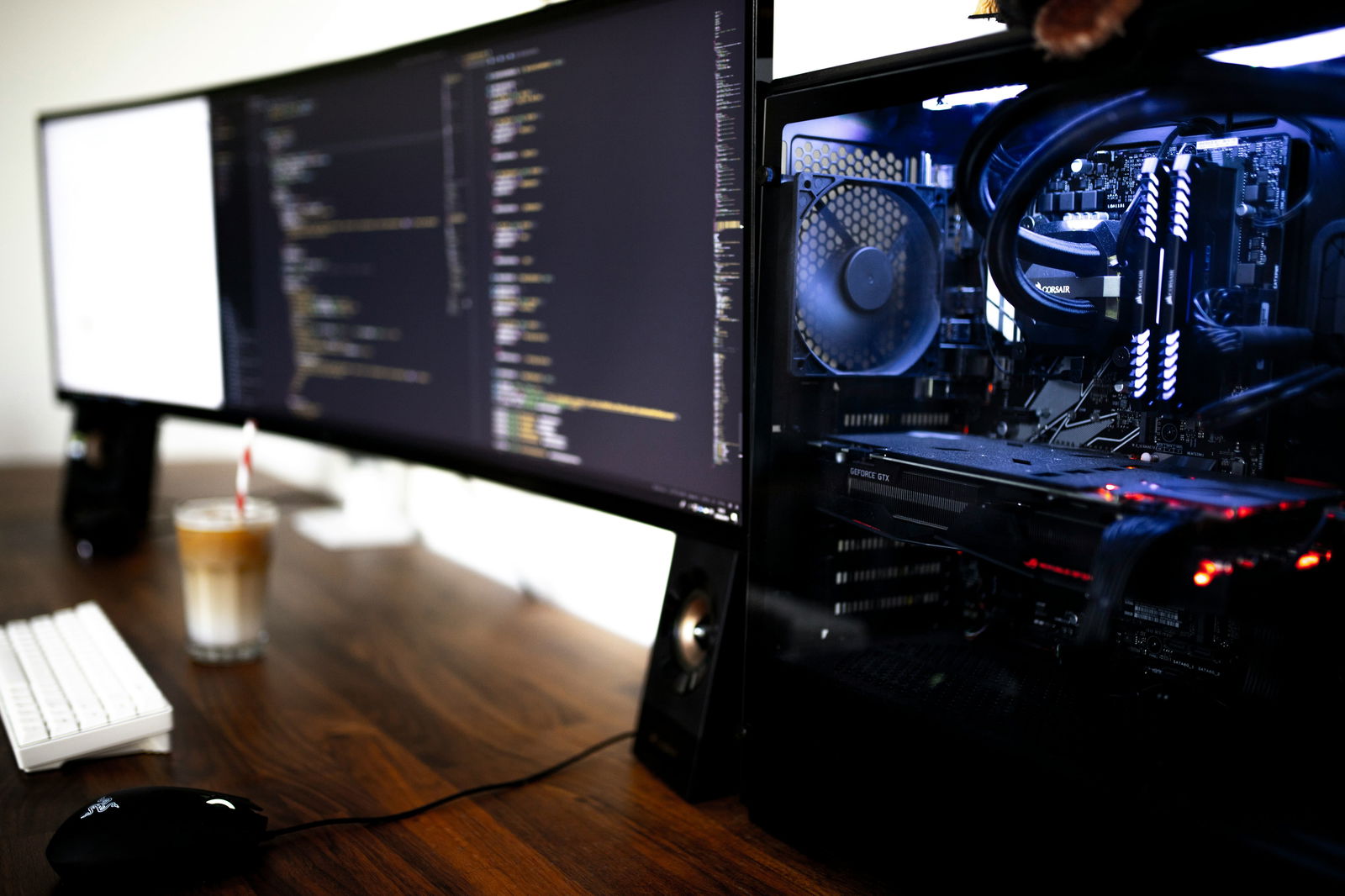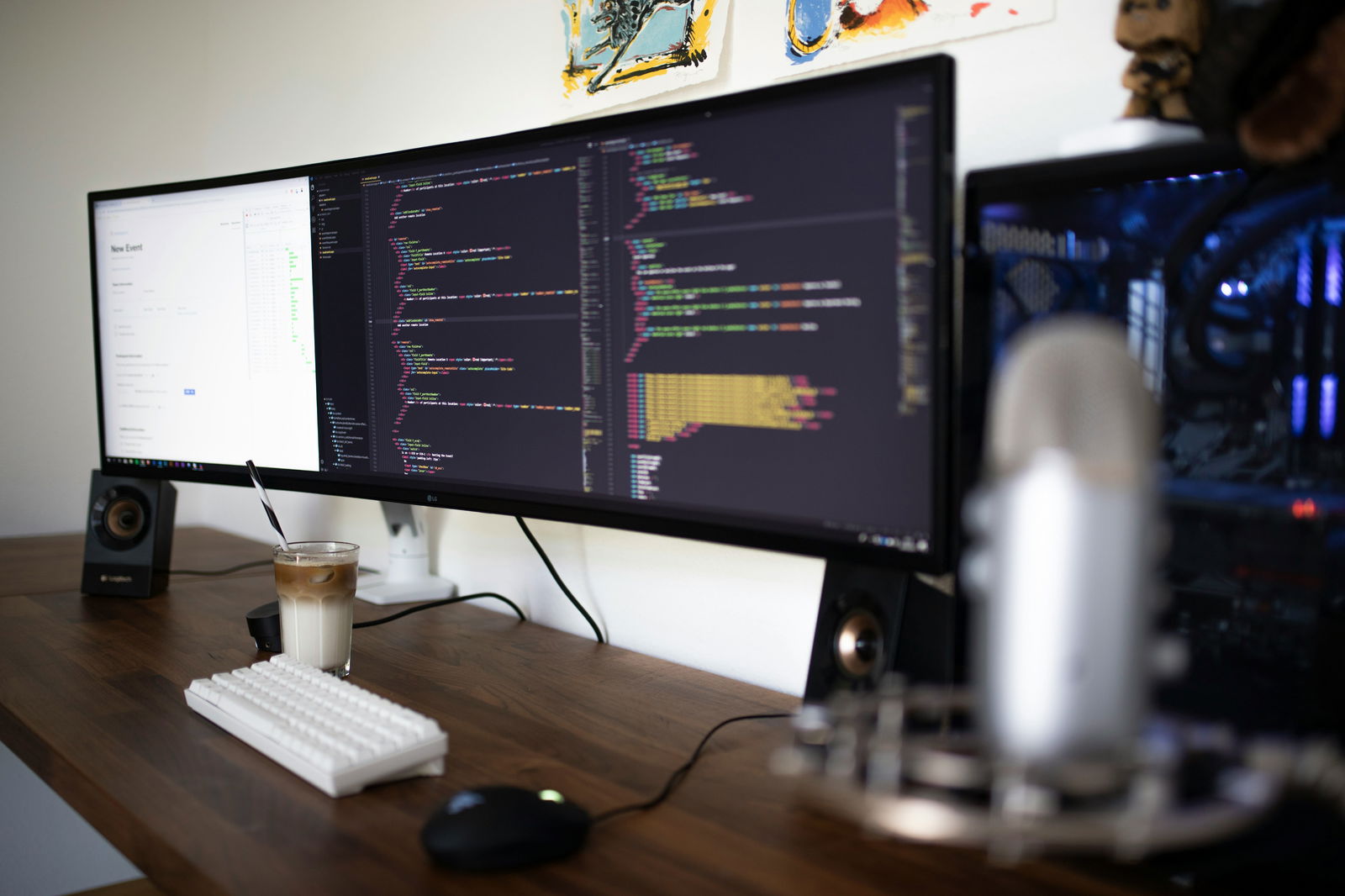Are you trying to discover the magic behind React Native Libraries and the world of UI frameworks? Picture this - you have an exciting app idea but are unsure how to bring it to life with exceptional user interfaces and seamless interactions. This is where React Native Libraries come into play, transforming your vision into an intuitive and engaging reality. Interested in delving into a world of endless possibilities to tailor your app to perfection? This blog will guide you through the fascinating realm of React Native Libraries, offering insights and knowledge to help you unveil their potential and value.
Magic UI's React component library can be your go-to solution, simplifying your quest to master React Native Libraries and packages. This resource can enhance your understanding of the functionalities of different libraries, paving the way to crafting unique and engaging user interfaces for your projects. Ready to unveil the secrets behind React Native Libraries and master them for your app development journey? Let's embark on this adventure together!
What Is React Native?

React Native is a JavaScript-based mobile framework created by Facebook to develop native applications for Android and iOS. It combines JavaScript and JSX to provide access to native rendering APIs, offering the look and feel of a mobile application through mobile UI components. Leveraging React, React Native allows developers to create apps using the same codebase for various platforms.It enables JavaScript interfaces to access platform APIs like the user's location or phone camera, making it a versatile tool for releasing apps.
Leading companies like Microsoft, Shopify, Puma, Walmart, Tesla, and Flipkart are already harnessing React Native to convert JavaScript components into native ones.
React Vs React Native

If you're well-acquainted with React and React Native, you'd know these two technologies are like twins with distinct personalities. React is a JavaScript library of reusable components that's perfect for whipping up single-page web applications. Think of it as the go-to for building these apps. On the flip side, React Native takes the game up a notch by enabling the creation of native mobile apps with reusable components. This framework, built on React JS, packs a punch when it comes to crafting mobile app designs.
React for Web Applications and React Native for Mobile Apps
React excels at building web applications' user interfaces, while React Native is the ace in the sleeve for developing mobile applications for Android, iOS, and Windows. The former leverages the power of HTML, CSS, and JavaScript to craft interactive user interfaces for web applications. On the other hand, React Native taps into APIs and native UI components to piece together brilliant mobile applications.
Rendering Technologies for React and React Native
React builds applications using a virtual DOM to render browser code. This differs from React Native, which employs a Native API to render components for mobile applications. These distinct rendering technologies are vital in dictating how the apps behave and perform in their respective environments.
Learning Curve: React vs. React Native
Jumping into React may seem daunting, given its extensive library knowledge requirements. React Native, with a foundation in React and JavaScript, is structured to be more beginner-friendly. This design aims to smooth the learning curve for developers, making the onboarding process a breeze.
React and React Native: Ruling the Industry
Both React and React Native are dynamic duos ruling the industry with their brilliance. These frameworks are the go-to for many professionals keen on crafting exceptional mobile and web applications. Plus, the difference between web apps and websites won't even faze your users.
Building Captivating UIs with MagicUI's Free Library
MagicUI is a free and open-source UI library that we designed specifically for design engineers. It offers a collection of over 20 animated components built with React, TypeScript, Tailwind CSS, and Framer Motion. We provide a range of visually appealing and interactive elements that can be easily integrated into web applications, allowing us to create stunning user interfaces with minimal effort.
MagicUI components are highly customizable, enabling seamless adaptation to match our desired branding and design requirements. With our focus on animation and a design-centric approach, MagicUI aims to bridge the gap between design and development, empowering us to craft captivating digital experiences. Along with our free component library, with MagicUI Pro, you can save thousands of hours and create a beautiful landing page, and convert your visitors into customers with our website templates.
Use our React component library for free today at https://magicui.design/docs.
Related Reading
- React Frameworks
- What Are UI Components
- What Is A Component Library
- React Libraries
- React CSS Framework
- React Design Patterns
- Component Libraries
- React Best Practices
Why Should You Use A Component Library In React Native?

Developers and designers find React Native component libraries indispensable for several reasons. First and foremost, it simplifies the arduous task of designing visually appealing user interfaces from scratch. Rather than spending days or weeks designing buttons, forms, lists, and other commonplace UI components, developers and designers can leverage these libraries to access pre-designed, customizable UI components, saving significant time and effort.
Platform Consistency
React Native component libraries help unify the appearance of apps across platforms. This is especially vital, considering that most developers design their apps for both Android and iOS. The libraries contain UI components that look native to both platforms, providing a consistent user experience.
Boosting Development Efficiency
Another reason developers and designers use React Native component libraries is their ease of use. These libraries are user-friendly and come with extensive documentation. They help streamline the development process, enabling developers to spend more time on the logic of their apps rather than the design.
Customizable Design Options
React Native component libraries are highly flexible. Developers can customize the libraries to suit their preferences and needs, easily altering the design, color scheme, and other aesthetic elements of their apps. This flexibility ensures that no two apps built with React Native look alike.
Related Reading
- Best React Native UI Library
- React Component Best Practices
- Tailwind Vs Bootstrap
- Material UI Alternatives
- Best React Component Library
- React Tips
- Create React Component Library
- Cool React Components
- Component Library Examples
- Bootstrap Vs React
- Best React UI Framework
- NextJS
- Next.JS
- Next JS
- React Bootstrap
- MUI Table
- MUI Card
- MUI Box
- What Is NextJS
5 Major Benefits Of React Natives

1. Time and Cost Efficient
React Native saves developers time and effort by enabling them to write code once and deploy it across multiple platforms. This means no more building separate code for iOS and Android, significantly streamlining the development process.
2. Easy to Comprehend
With its 'learn once, write anywhere' approach, React Native simplifies app development. If you're familiar with React, transitioning to React Native is seamless. You can leverage existing tools and routines, reducing the learning curve and speeding up development.
3. Cross-platform Development
React Native apps are written in JavaScript, meaning developers can create a core codebase in a common language for all platforms. The code interacts with native operating system components, enabling apps to run on iOS and Android platforms.
4. Third-party Plugins
React Native supports a variety of third-party plugins that enhance app functionality. By leveraging JavaScript-based and native modules, developers can avoid starting from scratch and quickly integrate features to improve their app's performance.
5. Large Community
React Native has a large and active community of developers who collaborate, share expertise, and provide support. This community-driven approach enables developers to leverage existing component libraries and solutions, saving time and resources.
21 Best React Native Libraries You Should Know About

1. Magic UI
MagicUI is a free and open-source UI library that we designed specifically for design engineers. It offers a collection of over 20 animated components built with React, TypeScript, Tailwind CSS, and Framer Motion. We provide a range of visually appealing and interactive elements that can be easily integrated into web applications, allowing us to create stunning user interfaces with minimal effort.
MagicUI components are highly customizable, enabling seamless adaptation to match our desired branding and design requirements. With our focus on animation and a design-centric approach, MagicUI aims to bridge the gap between design and development, empowering us to craft captivating digital experiences. Along with our free component library, with MagicUI Pro, you can save thousands of hours and create a beautiful landing page, and convert your visitors into customers with our website templates.
Use our React component library for free today at https://magicui.design/docs.
2. NativeBase
NativeBase, a dynamic front-end framework, is a versatile solution for developers. If you find yourself rewriting React components for different platforms, NativeBase is your go-to tool. The library is a collection of essential cross-platform React Native components, providing a solid foundation for building your app. The components are built with React Native and some JavaScript functionality, offering various customizable properties. You can also leverage any third-party native libraries out of the box, enhancing the versatility of your app.
NativeBase is fully open-source and has tens of thousands of stars on Github. The themes come at a premium as more features and screens are added. NativeBase is now available for web users, too. Using the same JavaScript codebase and working with platform-specific design for Android and iOS, you can achieve a native look and feel for your app. Their open-source projects include a Native starter app, a Twitter Clone app, a ToDo app, and a tutorial app. In their premium basket, you’ll find starter apps for booking, rentals, job listings, messaging, and more.
3. React Native Elements
React Native Elements, an open–source, cross-platform React Native UI toolkit is a treasure trove of customizable components. It offers various options, from pricing to overlay, a badge to the platform-specific search bars. This library's creators believe that components' structure is more important than design, and they've made it easy for developers to use very little boilerplate code to get the components ready for use. This flexibility in control over the appearance of the components is what sets React Native Elements apart. With 20.7k stars on Github, it's a toolkit that's definitely worth exploring.
4. Teaset
Teaset is a great addition to our list of React Native component libraries. It is a UI library featuring 20+ pure JS(ES6) for component content classes. With a few thousand stars on Github, Teaset is a fit for those with a knack for simplicity and design. It focuses on content display and action control.
5. React Native Maps
React Native Maps is another useful library that provides customizable map components for your iOS and Android apps. You can offer your users different experiences on the map using this library. You can combine the components with the Animated API to give an animated effect for the components. For example, you can animate the zoom, marker views, and marker coordinates and render polygons and polylines on the map.
React Native Maps is compatible only with React Native ≥v0.64.3. If you plan to use React Native Maps with a project that uses an older React Native version, be sure to update it.
6. React Native Gifted Chat
React Native Gifted Chat is a React Native library that allows developers to add chat functionality to their apps. It supports various features such as text messages, emojis, and more. It also provides developers with a range of options for customizing the look and feel of their apps.
React Native Gifted Chat has great documentation, making it easy for developers to get started. It also has a range of themes and styles to choose from, allowing developers to create beautiful apps quickly.
7. Lottie for React Native
Lottie is a mobile library from Airbnb that helps you add animations to your apps. After creating animations in Adobe After Effects, you’ll normally need to convert them into a format usable in your web app. Lottie helps you with this.
Effortless Integration
It exports animation data in JSON format from an After Effects extension, BodyMovin. This extension is bundled with a JS player to render animations on the web. It works with React Native too, and you can access the official docs on Github where it has garnered thousands of stars.
Lightweight Performance and Visual Appeal
Lottie libraries and plugins are available for free, and you can use the curated collection of animation files to make your apps attractive and interesting. The animation files are small in size and are in vector format. As such, you should not experience any impact on the performance of your app. At the same time, it can spice up your UI and make it more visually appealing.
8. Ignite CLI
This starter kit was developed to help programmers launch their projects faster. It includes flexible and easy–to–use boilerplates. Developers can use them for iOS and Android platforms and easily adapt them to their apps. Specialists who worked with this tool say it saves them two to four weeks of development time. This open–source instrument boasts many built-in components, thanks to which Ignite CLI managed to get 12.5k stars.
9. React Native Vector Icons
This one is among the best React Native component libraries if you’re looking for some icons to use in your apps. With a library of 3,000+ icons, you’re sure to find something that will fit your needs. What’s more, it’s possible to customize, style, and extend the icons while integrating them into your project.
The package supports TabBar and Toolbar Android, as well as image source and multi-style font. With thousands of stars on Github, it can be a perfect fit for buttons, logos, and navbars. It draws on React Native’s animated library, combining it with any icon to create an animated component. If you already have an icon font with an associated CSS file, then you can easily generate an icon set with the generate-icon script.
10. Shoutem UI
If you’re in the market for a professional-looking UI for your React Native iOS or Android apps, then the Shoutem UI kit is a great choice. Shoutem UI is an open-source library part of the Shoutem UI toolkit.
Shoutem UI consists of more than 25 composable and customizable UI components, each with pre-defined styles that support other components. By combining them, you can build complex UIs. You can also apply custom CSS-like styling using the Shoutem themes library and animations using the animation components library, like ZoomIn, FadeIn, etc.
11. React Native Mapview
One of the React Native component libraries that offers map components for Android and iOS is React Native Mapview. Its construction is such that regular features on any map, such as markers and polygons, are specified as children of the Mapview component. This assists the API to declaratively control features on the map intuitively. On your part, you’ll need to ensure that Google Maps API is enabled in Google Console.
Interactive Map Controls
There’s a lot you can do to customize the map style. You can change the map view position, track the region/location, and make points of interest clickable on Google Maps. You can enable zooming in to specified markers or coordinates or even animate them. If you assign an animated region value to the prop, Mapview can utilize the Animated API to control the map’s center and zoom. Unless you specify custom markers, default markers will be rendered.
Marker Customization and Overlays
What’s cool is the markers are draggable, can be customized using images, and they update other UIs during drags. If you need more, there’s a custom callout to markers, polygon creators, and circle and polygon overlays. iOS users can create gradient polylines. It's not surprising that it has thousands of stars on GitHub.
12. React Native Camera
It is a go-to component library that allows developers to create React Native apps that work with the device’s camera. It supports videos, photos, text recognition, barcode scanning, face detection, and more. Programmers won't be concerned about the native code with this tool when they implement camera functionality in their mobile apps. Like other mentioned React Native component libraries, it is quite popular among specialists, which is confirmed by 9.1k stars.
13. React Native Snap Carousel
This component library offers programmers various parallax images, layouts, previews, performant handling of huge numbers of items, snapping effects, and so on. They can use it to add different sliders to their iOS or Android apps. This library will be the best choice if you want to develop an online store. It can be used to create a catalog with offers and discounts.
React Native Snap Carousel provides an API for customization, which allows you to change the component's appearance and behavior. Its carousel control methods allow users to move an item by clicking a button or using a keyboard shortcut. This instrument has 8.6k stars on GitHub.
14. React Native Paper
This cross-platform component library supports global themes and offers programmers various components, including buttons, a navigation bar, a loader, etc. Developers can apply this library to mobile and web apps. They can easily create light and dark themes and add their own fonts, color schemes, etc. It uses the Material Design UI, a very good feature for beginners. React Native Paper has 8k stars.
15. Nachos UI
This library includes more than 30 ready–to–use UI components and many customizable UI components. It supports Prettier, Yarn, and Jest Snapshot Testing. This React Native component library allows developers to choose any of the pre-styled inputs, such as forms or text buttons. In addition, they are highly customizable. This free and open–source instrument has gotten 2k stars.
16. Victory Native
Victory Native is a charting library for React Native applications. It simplifies the process of adding data visualization to your app. It's a valuable tool for creating engaging and informative dashboards or reports within your app.
17. React Native Firebase
Firebase is a comprehensive platform for building mobile and web applications, and React Native Firebase brings the power of Firebase to React Native developers. This library provides easy-to-use Firebase modules, including authentication, real-time database, cloud storage, cloud messaging, and more.
React Native Firebase simplifies the integration of Firebase services into your app. So you can focus on delivering core functionalities without getting bogged down by infrastructure setup.
18. Galio
Galio is a React Native UI library with various components and styles to make mobile app development easier. It supports components such as buttons, cards, lists, and more. It also provides developers with a range of options for customizing the look and feel of their apps. Galio has great documentation, making it easy for developers to get started. It also has a range of themes and styles to choose from, allowing developers to create beautiful apps quickly.
19. React Navigation
React Navigation is the ideal library to use while developing app launch screens. It brings many benefits in the form of complete customization and the extensibility factor. The most important part is that it has built-in navigators, which account for ease of use.
20. React Native UI Kitten
One of the React Native component libraries that can be used as a starter kit for mobile apps for any domain, including eCommerce, is React Native UI Kitten – a React Native implementation of the Eva Design system. With thousands of stars on Github, it offers a set of about 20 general-purpose components styled in the same way to take care of visual appearance. With this forever free and open-source library, you can use the themes provided or create as many themes of your own, all without changing the source code of the components. You can switch between dark and light themes during runtime without reloading the page. Once you install the UI Kitten package from NPM, you can import and use the components in your project.
21. RNUI: React Native UI Library
Well-maintained and used by Wix, the RNUI library is a toolset for building amazing React Native apps. It supports both older and the latest React Native versions, and it provides more than 20 customized components, some of which, like Drawer, can be easily integrated for building modern swipeable lists, like the Gmail app’s inbox. It also has custom animated components, like an animated scanner, which is useful for indicating progress for a card, like an uploading status, and an animated image.
RNUI is another UI library that supports the right-to-left writing system, and it includes full accessibility support.
Challenges Associated With Using React Native

1. Lack of Some Custom Modules
One of the main challenges of using React Native in projects is the lack of ready-to-use modules that provide access to APIs for both Android and iOS. This means developers often have to create Native Modules or develop bridges using Java/Kotlin for Android or Swift/Objective-C for iOS. This process significantly increases the software development time and can be a frustrating hurdle for developers looking to implement certain features quickly.
2. Lower Performance
Another disadvantage of using React Native is the potential decline in performance due to using bridges or custom modules. By integrating these additional components, the app might experience delays or lags, which could affect the overall user experience. Developers must carefully consider the balance between functionality and performance when utilizing React Native in their projects.
3. Debugging Issues
Debugging React Native apps can become tedious, as they are built with a combination of different programming languages, including C/C++, Java, and JavaScript. This requires developers to have a strong understanding of each language and platform to troubleshoot issues that may arise during the development process effectively. Due to the complex nature of React Native apps, debugging can be time-consuming and challenging without the proper expertise and experience.
Installing A React Native Library

React Native libraries are typically installed from the npm registry, which offers a versatile choice of package managers, such as npm CLI or Yarn Classic, all powered by Node.js.
If you have Node.js installed on your computer, you already have the npm CLI installed. Some developers prefer to use Yarn Classic for slightly faster install times and additional advanced features like Workspaces. Both tools work great with React Native. For simplicity of explanation, we will assume npm for the rest of this guide.
To install a library in your project, navigate to your project directory in your terminal and run the installation command. Let's try this with react-native-webview:
npm install react-native-webview
The library that we installed includes native code, and we need to link to our app before we use it.
Linking Native Code on iOS
React Native uses CocoaPods to manage iOS project dependencies and most React Native libraries follow this same convention. If a library you are using does not, please refer to their README for additional instruction. In most cases, the following instructions will apply.
Run pod install in our iOS directory to link it to our native iOS project. A shortcut for doing this without switching to the iOS directory is to run npx pod-install.
npx pod-install
Once this is complete, re-build the app binary to start using your new library:
npm run ios
``
### Linking Native Code on Android
React Native uses Gradle to manage Android project dependencies. After you [install a library](https://reactnative.dev/docs/libraries#:~:text=You%20can%20install%20a%20particular,netinfo%40%5E2.0.0%20.) with native dependencies, you will need to re-build the app binary to use your new library:
npm run android
## Check Out Our React Component Library for Design Engineers
[MagicUI](https://magicui.design/) is a free and open-source UI library designed specifically for design engineers. It offers a collection of over 20 animated components built using React, TypeScript, Tailwind CSS, and Framer Motion. Our goal is to provide a range of visually appealing and interactive elements that can be easily integrated into web applications, enabling the creation of stunning user interfaces with minimal effort.
### MagicUI's Key Features
The components offered by MagicUI are highly customizable, allowing for seamless adaptation to match desired branding and design requirements. MagicUI aims to bridge the gap between design and development, empowering users to craft captivating digital experiences by focusing on animation and taking a design-centric approach.
### MagicUI Pro: Enhancing Your UI Development
In addition to the free component library, [MagicUI](https://magicui.design/) also offers a Pro version. With MagicUI Pro, users can save thousands of hours creating beautiful landing pages and converting visitors into customers using our website templates.
### Get Started with MagicUI Today!
Whether you're looking to enhance your existing web applications or kickstart a new project, MagicUI is here to help. You can take your UI development to the next level by leveraging our [React component library](https://magicui.design/).
Visit [https://magicui.design/docs](https://magicui.design/docs) to start using MagicUI for free today.
### Related Reading
- [Chakra UI Vs Material UI](https://magicui.design/blog/chakra-ui-vs-material-ui)
- [React Animation Libraries](https://magicui.design/blog/react-animation-libraries)
- [Ant Design Vs Material UI](https://magicui.design/blog/ant-design-vs-material-ui)
- [Mantine Vs Chakra](https://magicui.design/blog/mantine-vs-chakra)
- [Free React Components](https://magicui.design/blog/free-react-components)
- [Semantic UI Vs Material UI](https://magicui.design/blog/semantic-ui-vs-material-ui)
- [React UX](https://magicui.design/blog/react-ux)
- [Material UI Vs Joy UI](https://magicui.design/blog/material-ui-vs-joy-ui)
- [Ant Design Alternatives](https://magicui.design/blog/ant-design-alternatives)
- [Material UI React](https://magicui.design/blog/material-ui-react)
- [MUI React](https://magicui.design/blog/mui-react)
